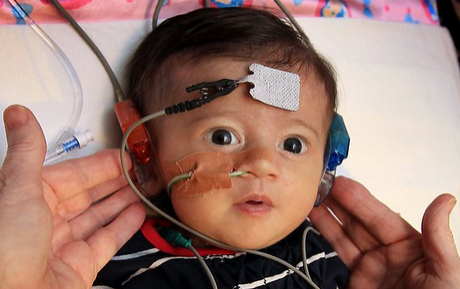
What is the Process and Why is it so Important?
New mothers have to spend so much time at hospitals and clinics having this or that examination during pregnancy and after birth that they might begin to wonder if its all necessary. Lets look at the reasons why early diagnosis of deafness is so vital to a childs development and how the testing is done.
When is a babys hearing tested?
Your babys hearing will be tested before you leave the hospital after giving birth. If no-one mentions such a test to you, inquire as to whether it has been done. This type of test should be standard procedure in most hospitals.
If there are any concerns that a possible hearing abnormality is present, the mother will be instructed to come for a follow-up screening at some point. Do not be alarmed if you are asked to come for a second screening. New-borns often fail the new-born screening owing to vernix in the ear, an accumulation of fluid in the middle ear or because they are restless during the test.
How is a new-born babys hearing tested?
One of two different methods can be used to test an infants hearing. The auditory brainstem response (ABR) method or the otoacoustic emission (OAE) method are both non-invasive ways of finding out whether a baby might be suffering from impaired hearing. The tests are automated and dont require your baby to actually do anything.
ABR testing
In the ABR test, the electrical impulses that the nerves transmit to the brainstem eliciting a response in the brainstem are measured. Four or five electrodes are attached to the babys head and sounds are played through earphones. As soon as the auditory nerves are triggered, there response can be measured. The audiologist adjusts the levels to determine whether the infant reacts to softer sounds, determining his or her softest hearing level. In case youre wondering what the baby is listening to, its a simple clicking noise. The test take about 15 minutes and allows the audiologist to determine whether further testing will be needed.
OAE emission test
When a sound enters our inner ear, it is processed and passed on to the brain in the form of a nerve signal. However, some of the sound waves bounce back out of the inner ear. This is known as an optoacoustic emission. An audiologist can measure this inaudible sound with the help of a tiny, very sensitive microphone which is placed in the infants ear. The results are represented graphically, and the audiologist can determine which sounds elicited a response and which did not. The test takes around eight minutes to complete. OAE tests have the disadvantage of a higher percentage of false positive results.
Why is it so important?
During the first 3 years of our lives, our language skills develop at their fastest. A six-month old baby has already entered into this essential learning process. A hearing impaired baby will have more difficulty in developing normally and become a normal member of society if hearing loss is diagnosed late. If hearing loss is diagnosed early enough, steps can be taken to help the baby learn language skills during this vital period.